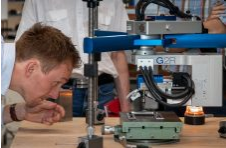

Residual stress is the self-balanced internal stress that remains in the object after removing the external force or the non-uniform temperature field.
The detection of residual stress has been carried out for many years at home and abroad, and its measurement methods can be divided into mechanical measurement methods and physical measurement methods.
When the mechanical measurement method is measured, it must be partially separated or divided to release the stress, which will cause certain damage or even damage to the workpiece. The typical grooving method and drilling method are mature in technology and perfect in theory. Among them, the small-diameter blind hole method has become a standard test method for on-site measurement due to less damage to the workpiece and more reliable measurement (see ASTM E837-99).
Physical measurement methods mainly include radiation method, magnetic method, ultrasonic method, and indentation strain method (GB/T 24179-2009), all of which belong to non-destructive testing methods. The indentation strain method uses a resistance strain gauge as a sensitive element for measurement, and uses impact loading to create an indentation at the center of the strain rose instead of drilling a hole. The true elastic strain of the residual stress magnitude is obtained, and the magnitude of the residual stress is obtained. From the results of existing engineering applications, this kind of method has the advantages of stress relief method, relatively simple test equipment, accurate and reliable test results, and the advantages of physical property method.
In the plasma spraying process, the residual stress comes from the two stages of preheating, thermal spray forming and coating cooling. The main reason is that the thermal expansion coefficients of the base material and the surface material are different. We take chromium oxide coating as an example. In the range of 0-1000 degrees Celsius, the thermal expansion coefficient of chromium oxide is 9.5×10-6/°C, while the thermal expansion coefficient of general alloy substrates is between 10~20×10-6/°C. When the thermal spraying is completed, to the stage of cooling to room temperature, the difference in thermal expansion coefficient between the surface layer and the substrate will cause thermal stress, also known as thermal stress.
Before preparing the ceramic surface layer, we spray a layer of transition material to balance the thermal expansion coefficient difference between the substrate and the surface layer to reduce residual stress, so as not to induce crack propagation at the interface, so that the coating germinates in these areas. layers and cracks. ,
In the preheating stage, quenching stress usually occurs. A higher substrate temperature can fully deposit the powder particles and form a dense coating, but it is too much: neither too high nor low preheating temperature is enough to make the substrate obtain a coating. Stable temperature during thermal spraying - reducing the temperature difference between the substrate and the surface layer during thermal spraying will reduce the quenching stress. According to experience, the lower the preheating temperature, the higher the coating forming temperature, the quenching stress will also increase.
Usually, the preheat temperature does not exceed 160 degrees Celsius, and the time does not exceed 20 seconds.
The article on this page is original, please inform us if you reprint it. If there is plagiarism, its shameful behavior will be cracked down.
Hot information

